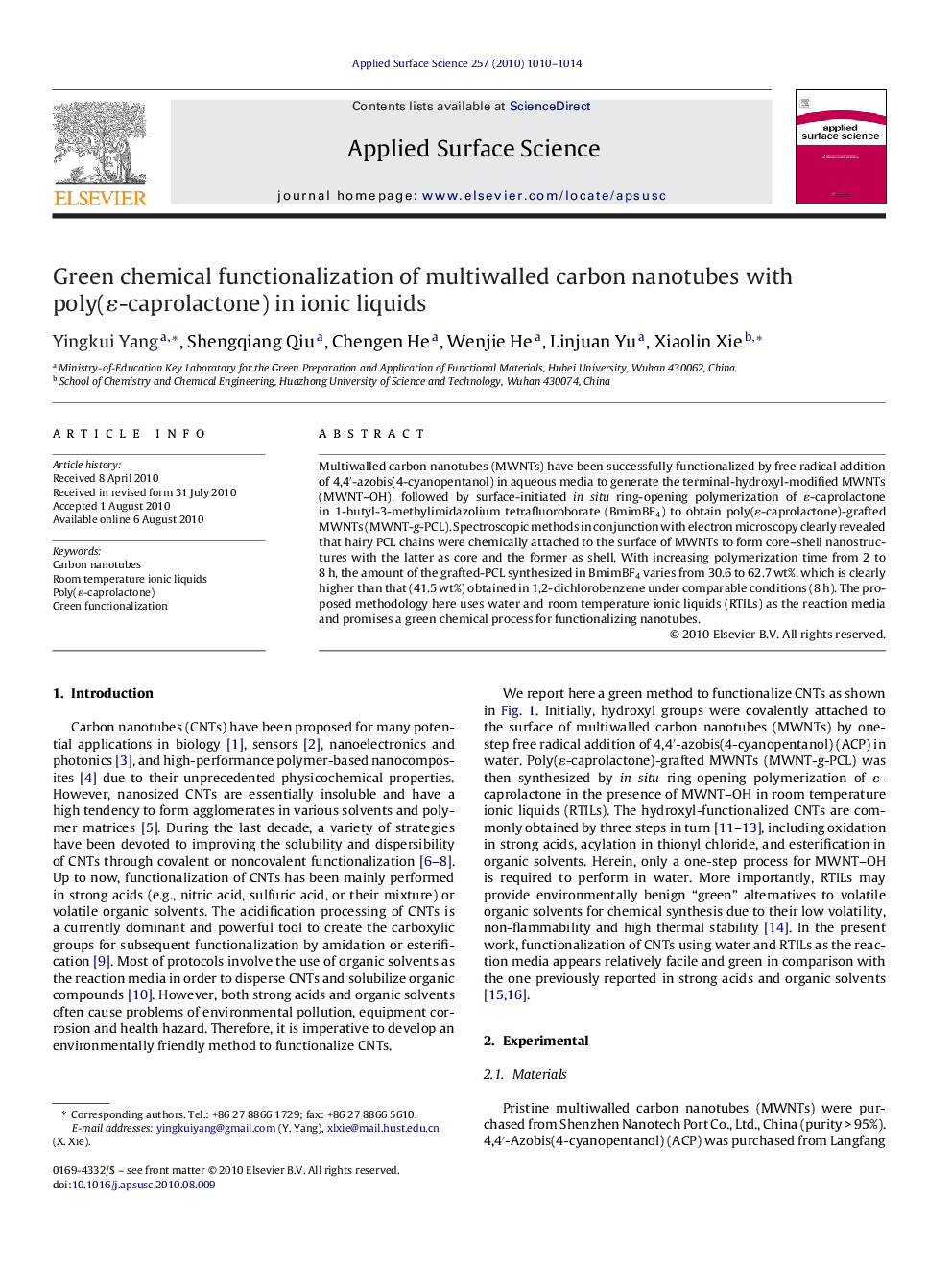| Article ID | Journal | Published Year | Pages | File Type |
|---|---|---|---|---|
| 5362322 | Applied Surface Science | 2010 | 5 Pages |
Abstract
Multiwalled carbon nanotubes (MWNTs) have been successfully functionalized by free radical addition of 4,4â²-azobis(4-cyanopentanol) in aqueous media to generate the terminal-hydroxyl-modified MWNTs (MWNT-OH), followed by surface-initiated in situ ring-opening polymerization of É-caprolactone in 1-butyl-3-methylimidazolium tetrafluoroborate (BmimBF4) to obtain poly(É-caprolactone)-grafted MWNTs (MWNT-g-PCL). Spectroscopic methods in conjunction with electron microscopy clearly revealed that hairy PCL chains were chemically attached to the surface of MWNTs to form core-shell nanostructures with the latter as core and the former as shell. With increasing polymerization time from 2 to 8Â h, the amount of the grafted-PCL synthesized in BmimBF4 varies from 30.6 to 62.7Â wt%, which is clearly higher than that (41.5Â wt%) obtained in 1,2-dichlorobenzene under comparable conditions (8Â h). The proposed methodology here uses water and room temperature ionic liquids (RTILs) as the reaction media and promises a green chemical process for functionalizing nanotubes.
Related Topics
Physical Sciences and Engineering
Chemistry
Physical and Theoretical Chemistry
Authors
Yingkui Yang, Shengqiang Qiu, Chengen He, Wenjie He, Linjuan Yu, Xiaolin Xie,
